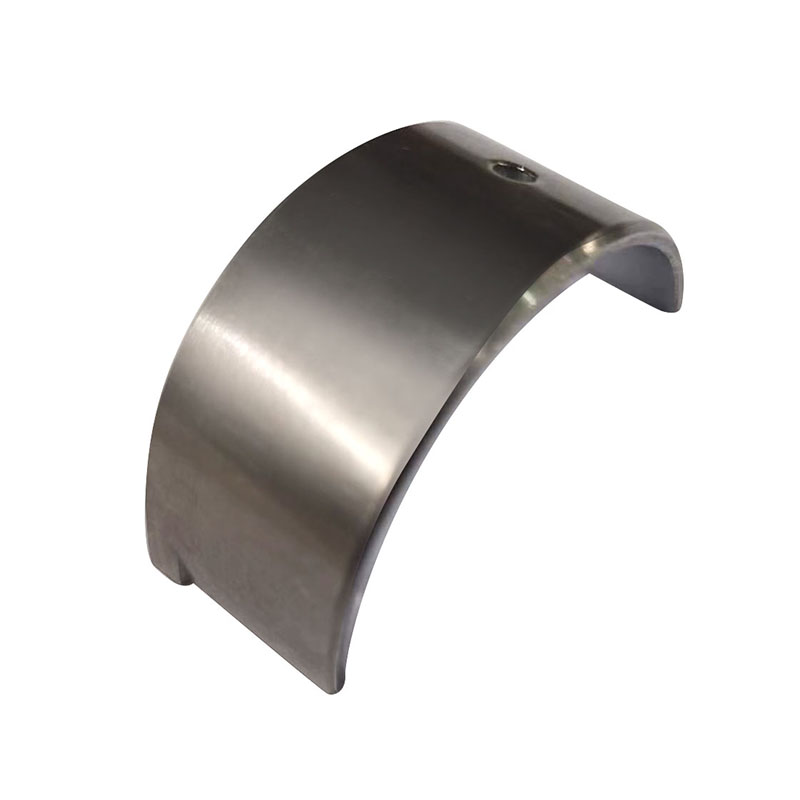
- English
- 简体中文
- Español
- Português
- русский
- Français
- 日本語
- Deutsch
- tiếng Việt
- Italiano
- Nederlands
- ภาษาไทย
- Polski
- 한국어
- Svenska
- magyar
- Malay
- বাংলা ভাষার
- Dansk
- Suomi
- हिन्दी
- Pilipino
- Türkçe
- Gaeilge
- العربية
- Indonesia
- Norsk
- تمل
- český
- ελληνικά
- український
- Javanese
- فارسی
- தமிழ்
- తెలుగు
- नेपाली
- Burmese
- български
- ລາວ
- Latine
- Қазақша
- Euskal
- Azərbaycan
- Slovenský jazyk
- Македонски
- Lietuvos
- Eesti Keel
- Română
- Slovenski
- मराठी
The Science Behind Modern Performance Engine Bearings
2025-02-28
Engine bearings are essential parts that guarantee internal combustion engines run smoothly. These tiny but vital components are vital to lowering friction, sustaining loads, and preserving engine performance. In order to survive harsh conditions, modern performance engine bearings have undergone tremendous evolution, including cutting-edge materials and engineering concepts. The physics underlying these high-performance bearings and their role in enhancing engine efficiency and dependability will be discussed in this blog.
1. The Function of Engine Bearings
Engine bearings serve as a cushion between moving parts, reducing metal-to-metal contact and minimizing wear. They primarily support the crankshaft, camshaft, and connecting rods, ensuring optimal rotation and motion within the engine. The primary objectives of high-performance engine bearings are:
- Reducing Friction: Minimizing energy losses and improving fuel efficiency.
- Supporting High Loads: Withstanding extreme pressures in high-performance and racing engines.
- Dissipating Heat: Preventing overheating and premature failure.
- Providing Durability: Enhancing resistance to wear and tear under continuous stress.

2. Materials and Coatings in Modern Bearings
The choice of materials plays a vital role in the performance of engine bearings. Modern bearings incorporate a combination of metals and coatings to optimize durability and efficiency.
a) Common Materials Used in Engine Bearings:
- Tri-Metal Bearings: Consist of a steel backing, a copper-lead intermediate layer, and a soft overlay for better adaptability.
- Bi-Metal Bearings: Typically made of aluminum alloys, offering good corrosion resistance and lightweight properties.
- Solid Polymer Bearings: Used in specialized applications for reduced friction and enhanced lubrication.
b) Advanced Coatings for High-Performance Applications:
- PTFE (Polytetrafluoroethylene) Coatings: Provide excellent wear resistance and low friction.
- DLC (Diamond-Like Carbon) Coatings: Improve durability and heat resistance in extreme conditions.
- Lead-Free Coatings: Environmentally friendly alternatives that offer improved fatigue resistance.
- Nano-Ceramic Coatings: Enhance load-bearing capacity and thermal stability.
3. Lubrication and Oil Film Formation
Lubrication is essential in ensuring that engine bearings function correctly. Bearings rely on a thin layer of oil film to prevent direct contact between metal surfaces. This oil film formation depends on:
- Hydrodynamic Lubrication: A pressure-generated oil film that keeps moving parts separated.
- Boundary Lubrication: A thin protective layer that remains when the oil supply is low.
- Oil Viscosity and Flow: Choosing the right oil viscosity is crucial for maintaining proper lubrication under different operating conditions.
4. The Role of Bearing Design in Performance Engines
Modern performance engines demand precision-engineered bearings with specific design features. Some critical design aspects include:
- Grooved vs. Plain Bearings: Grooved designs help distribute oil more effectively, reducing wear.
- Bearing Clearance: The correct gap between the bearing and the crankshaft ensures optimal oil flow and load distribution.
- Surface Finish: A finely polished surface reduces friction and extends bearing life.
- Load Distribution: Bearings must be designed to accommodate high loads and vibrations without deforming.
5. Challenges and Future Innovations
As engine technology advances, so do the demands on performance bearings. Some challenges include:
- Higher Operating Temperatures: The shift towards turbocharged and high-revving engines increases heat generation.
- Increased Power Density: Modern engines are more compact yet deliver higher power, placing greater stress on bearings.
- Eco-Friendly Solutions: The industry is moving towards lead-free and environmentally sustainable bearing materials.
Future innovations in engine bearing technology may include:
- Smart Bearings: Sensors integrated into bearings to monitor temperature, load, and wear in real time.
- Self-Healing Coatings: Advanced materials that can repair minor surface damage automatically.
- Advanced Lubrication Systems: Nano-lubricants and adaptive oil flow technologies for enhanced efficiency.
In conclusion
Extensive research, material improvements, and precision engineering have led to the development of modern performance engine bearings. These parts are necessary to maximize efficiency, minimize wear, and guarantee smooth engine operation. We may anticipate even more creative ways to improve the longevity and performance of bearings in high-performance applications as engine technology develops further. The science behind engine bearings keeps pushing the limits of mechanical perfection, whether in heavy-duty machinery, racing cars, or regular automobiles.
Mingyue was set up formally in 1999, as one of the professional China Automotive Engine Bearing manufacturers and factory, we are strong strength and complete management. Also, we have own exporting license. We mainly deal in making a series of Automotive Engine Bearing and so on. We stick to the principal of quality orientation and customer priority, we sincerely welcome your letters, calls and investigations for business cooperation. We assure you of our high quality services at all time.Visit our website at www.ycmyzw.com to learn more about our products. For inquiries, you can reach us at dfmingyue8888@163.com.




